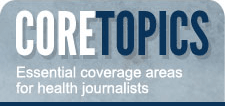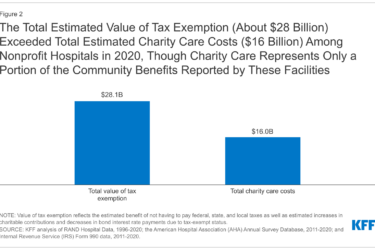We heard a fair amount last week about what states plan to do with their exchanges – and we’ll know more when the new state decision-making deadline rolls around on Dec 14.
In the coming days or weeks, we’ll get many many pages of new HHS regulations, some of which pertain to state exchanges and benefit packages. (Jordan Rau runs down some of the outstanding regs in this KHN piece ).

Joanne Kenen (@JoanneKenen) is AHCJ’s health reform topic leader. If you have questions or suggestions for future resources, please send them to joanne@healthjournalism.org.
But it’s probably a good time for some of you to review exactly what an exchange is, and how to build one. We’ll look at two stories that should help clarify that, one from NPR’s Julie Rovner and one from The Washington Post’s Sarah Kliff.
First, I want to clear up a misperception I think some of you may have about the federal fall-back exchange. We’re written before about the state run exchanges (Decision deadline Dec. 14 – the law requires HHS to certify exchange plans by Jan. 1, 2013) and the state-federal partnerships ( Decision deadline: Feb 15) But I’ve heard some folks get confused about the third option, the federally run exchange. These exchanges will still be state-based. In other words, the people in those states – Alaska, for instance, and South Carolina – won’t all go into one gigantic national exchange that serves all the all the states that don’t run their own. Instead, the federal government will establish an exchange in each of those states, working to some degree (it will vary) with state health and insurance officials.It’s not one big federal catch-all.
Also, states that don’t do their own for 2014 can still decide to take them on in subsequent years.
So let’s go back to the exchange basics:
Julie Rovner’s NPR story is a quick clear read. No need for me to quote from it – she offers an incisive and comprehensible description of what these new online insurance marketplaces are going to look like and a little bit about the states’ tasks in building them. She also touches on the concerns from conservatives about potential costs.
The second piece, by Sarah Kliff, gets more into the nitty gritty of what’s behind the exchange – the part that consumers won’t see. When I do panels or talks, I often note that the exchanges are commonly likened to travel websites like Travelocity or Expedia, and that the analogy is useful but imperfect. Buying insurance is not the same as choosing a flight. Still the general idea of going to a website and seeing the offerings (price, timing, how many stops, length of layover, seat availability and – if you are like me and hate flying – making sure a short flight’s a jet, not a prop) has some usefulness as a starting point for explaining exchanges to the uninitiated.
Then I always add that what lies behind that consumer web portal is far more complex. The exchanges don’t just list or even categorize all health plans. They determine who is eligible for subsidies, Medicaid or CHIP. That requires all sorts of interconnections between all kinds of state and federal databases – that currently are not on “speaking” terms, i.e. the IT systems don’t connect. The exchange will also have interweave with other aspects of state insurance regulation. Kliff explains much of this – and reproduces a helpful chart from a private sector consultant that shows the complexity. That chart may also be a good roadmap as you follow and try to assess your state’s progress.
If your state is doing an exchange, the chart (and her article) will help you visualize the “to-do” list. If it’s a partnership, see which piece your state is picking up. And if it’s the feds – try to report on where state cooperation is required and how much of it is forthcoming. Insurance regulation has usually been a state prerogative. Follow how that plays out in a new federal exchange landscape.
Please send good pieces examining how states are coming to these decisions – particularly if they have tracked down thoughtful lawmakers or analysts who get past “We love Obamacare” or “We hate Obamacare.” It will be particularly interesting to watch the remaining undecided governors – particularly a few of the Republican ones who may be more on the fence than earlier statements had suggested.









